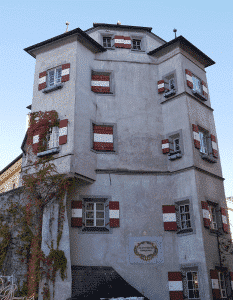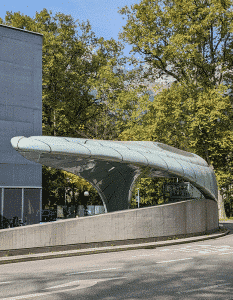When you think of Austria, the first thing that comes to mind is probably Vienna’s majestic palaces or Salzburg’s charming old town. But tucked away in the heart of Tyrol region lies Innsbruck, a city rich with history and culture. Among its many attractions, Hofburg stands out as a must-visit destination for any history enthusiast.
A Glimpse into Hofburg’s History
The Hofburg Palace in Innsbruck is one of Austria’s most significant cultural landmarks. Its origins date back to the 15th century when it was constructed by Emperor Maximilian I who used it as his main residence. The palace underwent several renovations over centuries under different rulers but its grandeur remained intact.
In the 18th century, Empress Maria Theresa decided to remodel the palace in Baroque style which gave birth to its current appearance – an impressive mix of Gothic and Baroque architectural elements that reflect both historical periods’ influence on Austrian architecture.
An Architectural Marvel
Hofburg is considered one of Europe’s finest examples of late-Baroque architecture. It features remarkable stucco work and frescoes by renowned artists like Cosmas Damian Asam and Paul Troger. The façade itself is a sight to behold with its intricate detailing and imposing presence.
The interior design complements this exterior splendor perfectly with opulent rooms adorned with gilded moldings, ornate chandeliers, silk wall hangings, antique furniture pieces from various eras along with numerous portraits depicting Habsburg family members throughout generations.
Exploring Inside the Palace
Inside Hofburg are five themed museum areas: Maria Theresa Rooms, Furniture Museum, Ancestral Gallery, Empress Elisabeth Apartment (Sisi Museum), and the Chapel. Each of these areas offers a unique insight into Habsburg dynasty’s life, making it an engaging journey through time for visitors.
The Maria Theresa Rooms are particularly noteworthy as they have been preserved in their original late 18th-century state including the Giant Hall (Riesensaal), which is considered one of the most beautiful Baroque halls in Austria. Here, you can marvel at stunning ceiling frescoes depicting scenes from mythology.
The Sisi Museum focuses on Empress Elisabeth’s private life with personal objects like her travel toiletry set, fan and gloves being displayed alongside portraits showing her beauty that was much talked about during her lifetime.
Location and Accessibility
Hofburg Palace is located right in Innsbruck’s city center, making it easily accessible by public transport or even on foot if you’re staying nearby. The entrance fee includes access to all museum areas but guided tours are available at an additional cost for those who wish to delve deeper into palace’s history.
A Blend of History and Culture
In conclusion, Hofburg is more than just a palace; it’s a living testament to Austria’s rich historical past. Whether you’re interested in art, architecture or history itself – this place has something for everyone. So next time when you find yourself planning a European vacation itinerary don’t forget to include Innsbruck – specifically Hofburg – because this Austrian gem deserves every bit of your attention!
Frequently asked questions
What is the Hofburg in Innsbruck and why is it significant?
The Hofburg in Innsbruck, also known as Imperial Palace, is one of Austria’s most important cultural buildings. The palace was originally built by Archduke Sigismund around 1460 and later expanded by Emperor Maximilian I. However, its current Baroque appearance dates back to the reign of Empress Maria Theresa who ordered a major renovation during the 18th century. This historical landmark stands as an embodiment of Habsburg power and influence throughout centuries. It offers a glimpse into royal life with its lavish rooms decorated with frescoes, portraits, and precious artifacts.
What can visitors see at the Hofburg in Innsbruck?
Visitors to the Hofburg can explore various sections including state apartments, imperial apartments, court church (Hofkirche), chapel (Hofkapelle), giant hall (Riesensaal) among others. The Riesensaal or Giant Hall is particularly impressive with its ceiling frescoes depicting scenes from Maria Theresa’s life. Also noteworthy are Gothic Stube room which has preserved medieval paneling and Kaiserappartements where you can see original furniture from different periods of Habsburg rule.
How do I get tickets for visiting Hofburg?
Tickets for visiting the Hofburg can be purchased online through their official website or directly at their ticket office on site. There are options for single tickets or combined tickets that include other attractions like Ambras Castle or Tyrolean Folk Art Museum too.
When is the best time to visit Hofurg in Innsbruck?
The best time to visit depends largely on your preference regarding crowd levels and weather conditions. Generally speaking though, summer months between June-August are the most popular due to pleasant weather, but they also come with larger crowds. If you prefer a quieter visit, consider going in spring (April-May) or fall (September-October). The palace is open throughout the year except for few public holidays.
Is there any guided tour available at Hofburg?
Yes, guided tours are available at Hofburg and it’s highly recommended for those who want to delve into its rich history. Tours are offered in multiple languages including English and German. There’s also an audio guide service if you prefer exploring at your own pace.












